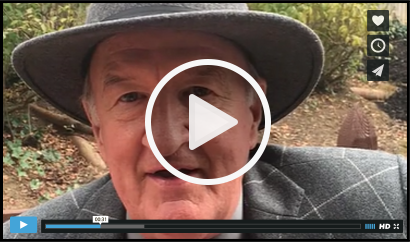What Do the Wealth Tax, the Estate Tax and RMD Have in Common?
The immense accumulations of fixed capital [has been] to the great benefit of mankind.” — John Maynard Keynes (1920)
“Free-market capitalism is the best path to prosperity.”
— Larry Kudlow motto on CNBC
Karl Marx got one thing right. He clearly identified the source of prosperity under free enterprise, or what Adam Smith called “the system of natural liberty.” He called it “capitalism” because it is “capital,” broadly defined, that drives economic growth and a higher standard of living.
Capital consists of saving, investment, capital formation, tools, machinery and equipment, entrepreneurship, technology, innovation, training & education and other supply-side factors that advance civilization to higher levels of prosperity.
What Drives the Economy, the Consumer or Business?
Too often the financial media gets it wrong when the news organizations report, “Consumer spending drives the economy.” In reality, consumer spending is the effect, not the cause, of prosperity. Consumers benefit because entrepreneurs and venture capitalists create new products and services.
It is business spending that drives the economy. See my column here: https://www.markskousen.com/says-law-vs-keynes-law-which-more-accurately-reflects-reality/.
As economist Larry Kudlow states, “Though not one in a thousand recognizes it, it is business, not consumers, that is the heart of the economy. When businesses produce profitably, they create income-paying jobs and then consumers spend. Profitable firms also purchase new equipment because they need to modernize and update all of their tools, structures and software.”
How to Slow Economic Growth: Tax Capital!
That brings me to the headline in today’s Investor CAFÉ. If you want to encourage long-term growth, cut taxes on capital.
If you want to slow down prosperity, raise taxes on capital.
The truth is:
–a wealth tax is a tax on capital.
–an inheritance tax is a tax on capital.
–an estate tax is a tax on capital.
–a capital gains tax is a tax on capital.
–a tax on interest and dividends is a tax on capital.
–a transaction tax on stock trades (Tobin tax) is a tax on capital.
–a progressive income tax is a tax on capital.
–Required Minimum Distributions (RMDs) on retirees after 70 ½ is a tax on capital.
All these forms of taxes reduce economic growth in the long run and can be quite dangerous.
The ideal is a zero tax on capital formation. One of the few countries to recognize this ideal is Hong Kong. It has a flat 18.5% tax on income, and no tax on capital gains, interest and dividends. Not surprisingly, Hong Kong now enjoys the highest level of income and growth in Asia.
Good investing, AEIOU,
![]()
Mark Skousen
Upcoming Appearance
Join me for the Orlando MoneyShow, February 6-8, 2020, at the Omni Orlando Resort at ChampionsGate. I will be speaking Thursday, Feb. 6, 9:30 a.m. about My Most Important Forecast & Strategy: When Will the Mother of All Bull Markets End? On Feb. 7, I will talk at 5:30 p.m. about The Best Offense Is a Good Defense: How to Beat the Market with My Five Favorite ‘War’ Stocks! Other investment experts who will be speaking include Carlson, Hilary Kramer and Bryan Perry. Register by clicking here or call 1-800-970-4355 and mention my priority code of 049278.
You Nailed it!
Rap Videos Reach Millennials: A Great Way to Introduce Austrian Economics
Free-market economists recently have come up with a creative way to reach college students and Millennials. Starting in 2010, they created the first rap song, “Fear the Boom and Bust: Keynes vs Hayek.” The video is the brainchild of John Papola, a pro-market film director who has won several awards at the Anthem film festival at www.freedomfest.com.
In 7 ½ minutes, he explained in simple jargon the differences between the two economists, John Maynard Keynes and Friedrich Hayek. In a way that both arguments sound convincing.
John Maynard Keynes was a British economist who was an early proponent of deficit spending, and F.A. Hayek was the Austrian economist who suggested low interest rates can make a boom but left low too long, it can turn to bust.
You can watch the video by clicking here.
So far, the Keynes vs Hayek rap video has generated 6.9 million views!
This year, Papola came up with a new rap video, “The March of History: Marx vs Mises.” The video defines the differences between the socialist and capitalist economic models. It is almost 11 minutes long, but so far has almost 1.8 million views. You can watch it by clicking here.
What’s great about these rap videos is that they introduce students, faculty and media to the Austrian school of Ludwig von Mises and F. A. Hayek. Everyone has heard of Marx and to some extent Keynes, but not Mises or Hayek. (Mises and Hayek often were ignored in textbooks and histories of economics.) They are not household names.
But by cleverly taking a balanced approach and giving both sides fair play, Mises and Hayek have become known and representative of the free market. And they do it in 11 minutes or less, not an hour or two-hour debate. It’s a brilliant “Trojan Horse” strategy that will appeal to young people especially.

